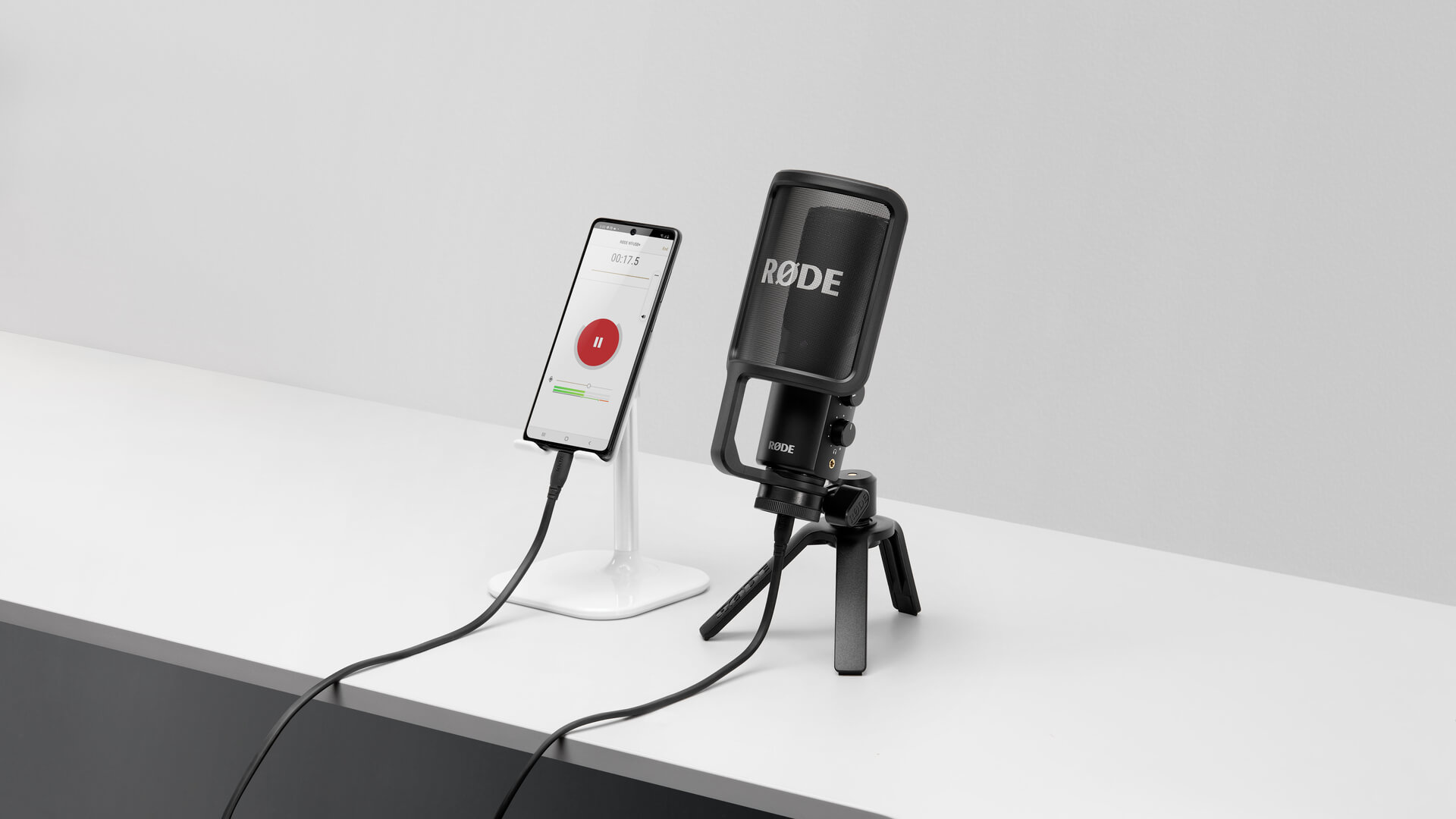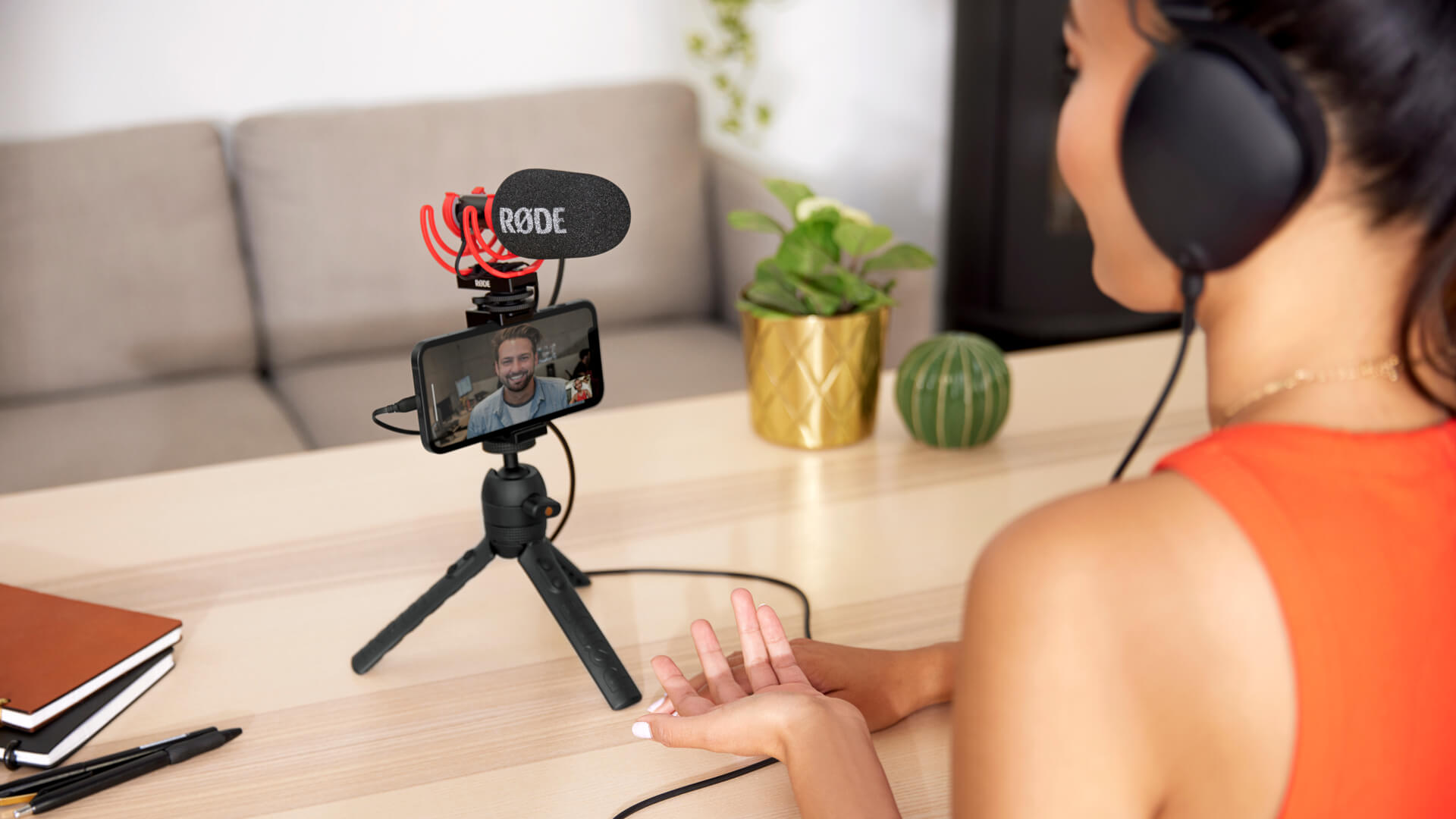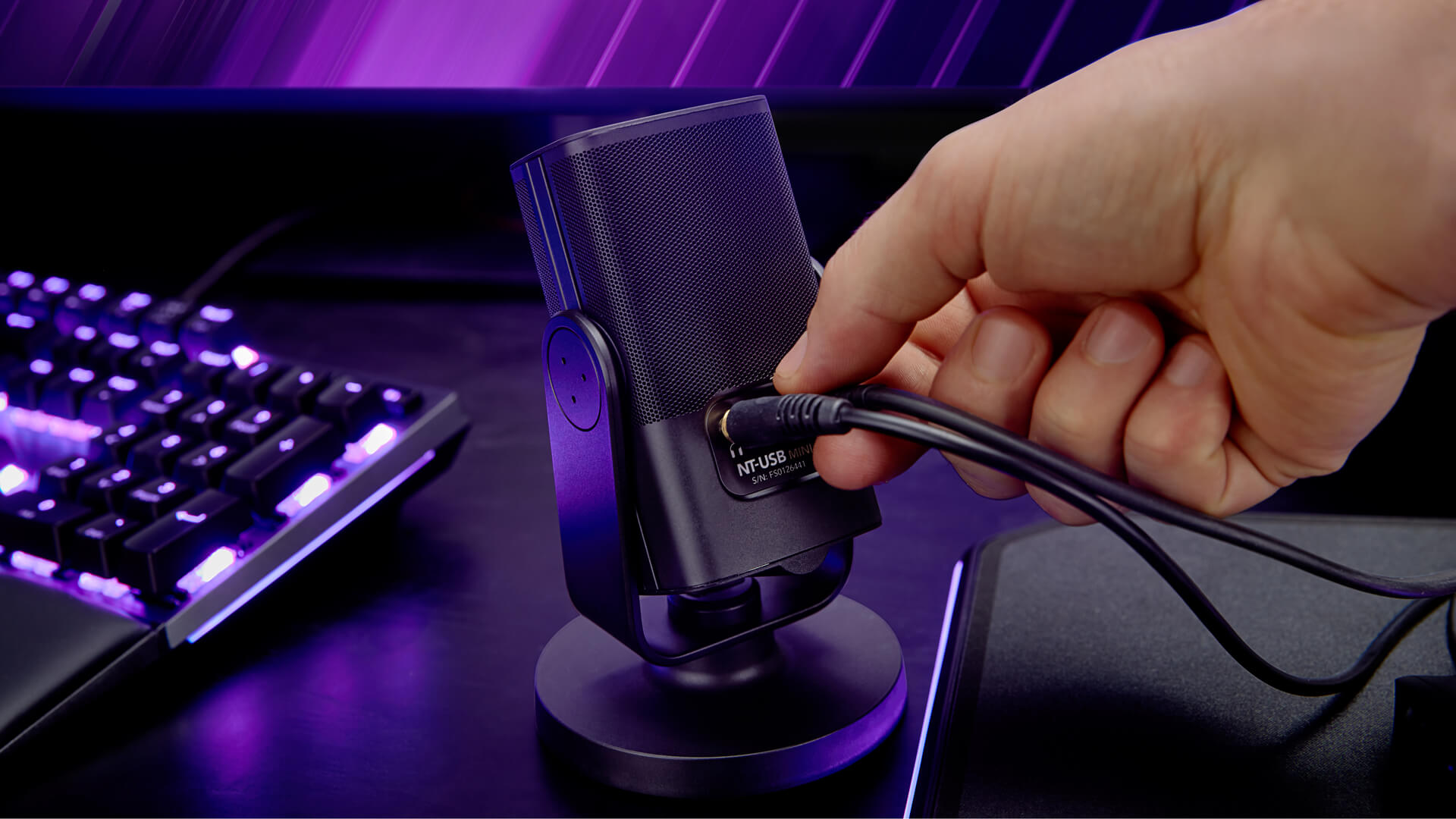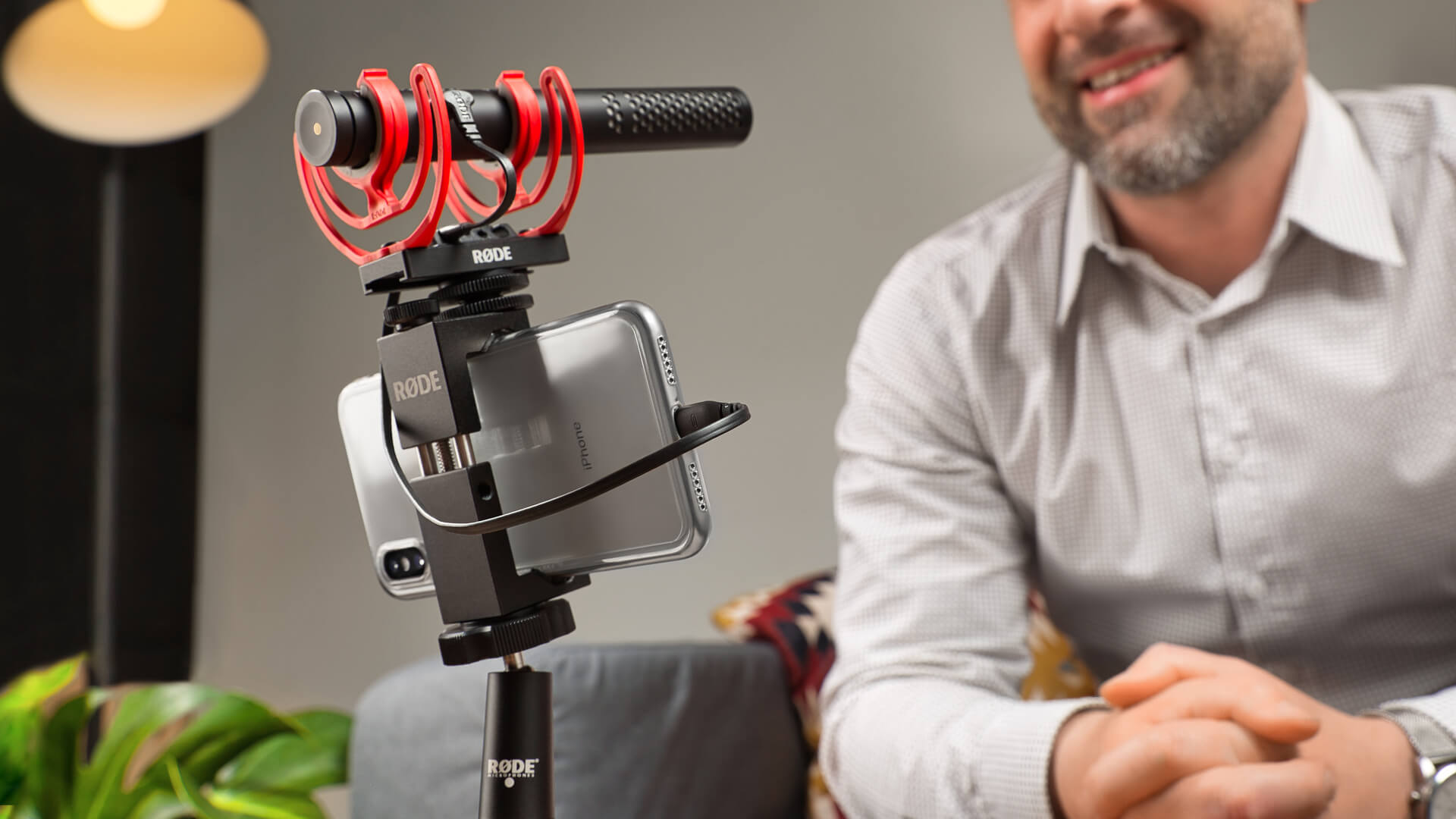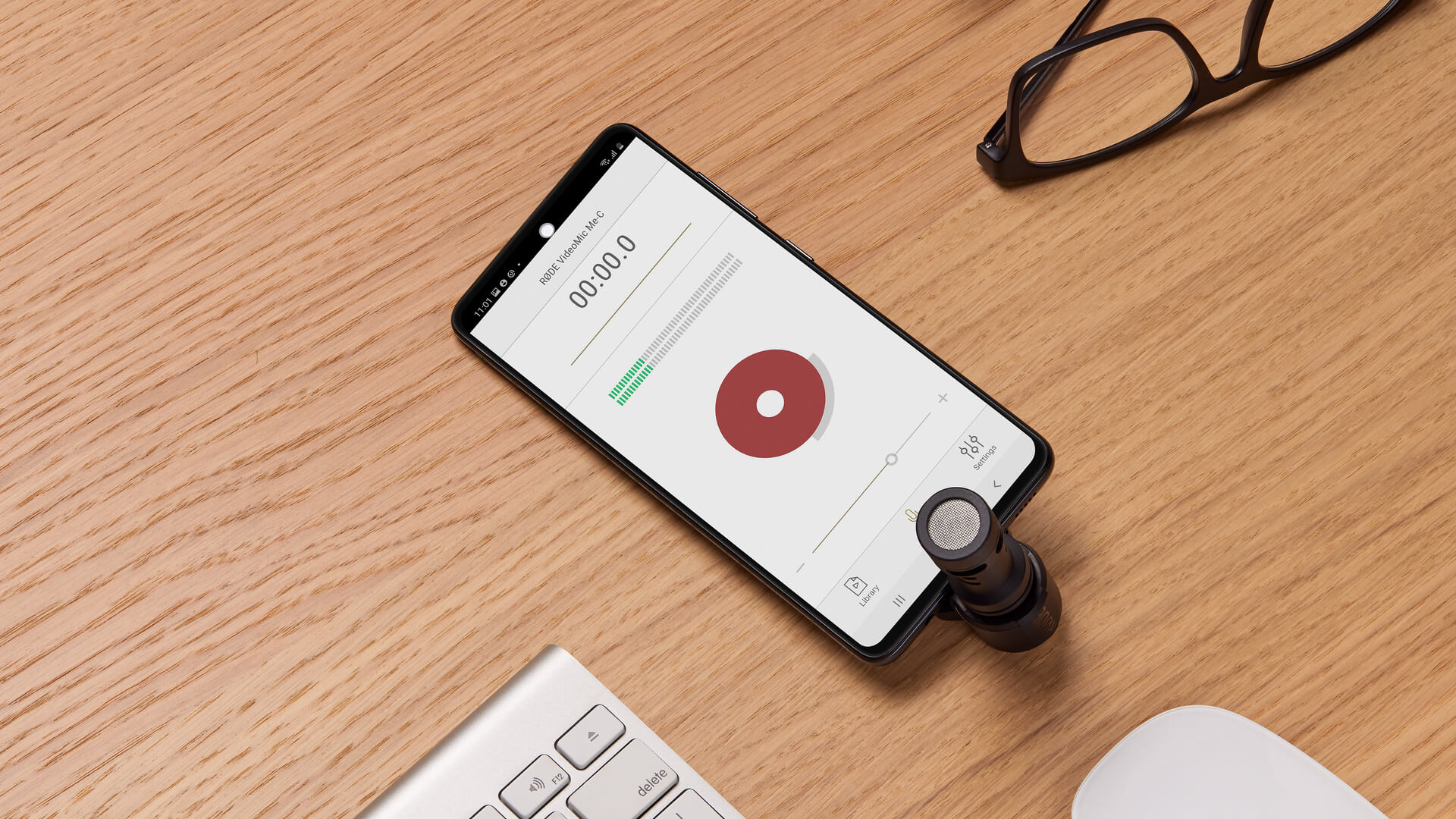Equipo Compacto para Cine y Creación de Contenido
Con la mayoría de los teléfonos inteligentes modernos teniendo capacidades de video potentes, simplemente agregar un micrófono de cañón profesional USB como el VideoMic NTG puede convertir tu teléfono en un equipo de videografía de calidad profesional que puedes llevar contigo a donde vayas. También puedes echar un vistazo a los Kits de Vlogger de RØDE (disponibles en versiones para iOS, USB-C y Universal 3.5mm) para un conjunto de vlogging todo en uno, que incluye un micrófono compacto de alta calidad, Tripod 2, soporte para teléfono, luz en cámara MicroLED y otros accesorios.
Estudio de Música Portátil
Con la amplia gama de aplicaciones para hacer música disponibles para teléfonos y tabletas hoy en día, emparejar tu dispositivo con un micrófono USB de alta calidad como el NT-USB+ lo convierte en un conjunto de grabación y edición de música súper versátil y potente. Las tabletas son generalmente más adecuadas aquí, ya que tienes más espacio en pantalla (y generalmente más potencia) para manejar tus grabaciones multipista y usar procesamiento y efectos.
Eligiendo un Micrófono USB
Cualquier micrófono USB va a ofrecer una mejora masiva en la fidelidad de audio sobre el micrófono incorporado en tu teléfono o tableta, pero mientras estás mejorando, bien podrías elegir un micrófono USB de alta calidad, idealmente con algunas características específicas para ayudarte. Vamos a echar un vistazo.
Monitoreo de Auriculares sin Latencia
Con algunas excepciones, muchos teléfonos y tabletas modernos ya no tienen una salida de 3.5mm, por lo que es importante buscar un micrófono USB con su propia salida de auriculares – afortunadamente, esta es una característica bastante estándar. Mejor aún, si optas por un micrófono USB con monitoreo sin latencia (como nuestro NT-USB Mini y NT-USB+), puedes escuchar tu voz o instrumento sin ningún retraso.
Sin esta característica, la señal de tu micrófono se enviará a tu dispositivo móvil, a través de tu aplicación de audio o video, y luego de vuelta, creando un retraso que no solo es irritante al grabar, sino que también puede interferir con los patrones de habla y las actuaciones musicales.
